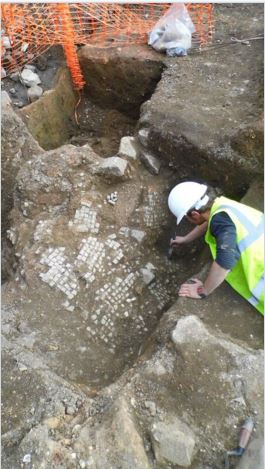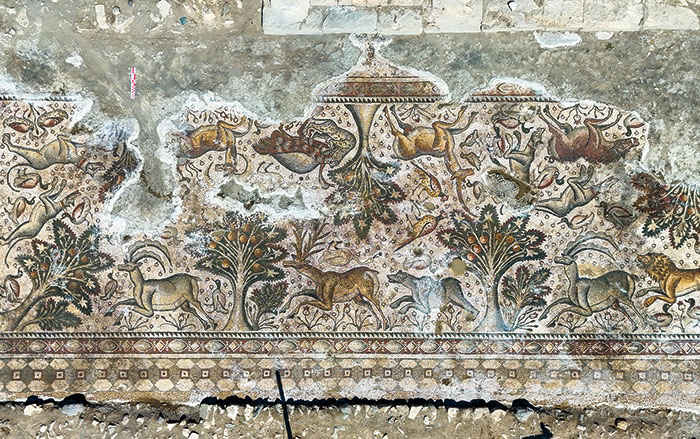
LEICESTER, ENGLAND—Construction work at the former site of a bus depot has given archaeologists the rare opportunity to examine the area at the corner of Southgates and Peacock Lane in central Leicester. Between the twelfth and sixteenth centuries, this area is thought to have been crowded with houses and shops. The team from University of Leicester Archaeological Services has uncovered stone-lined pits that may have been cisterns or used for storage, garbage pits, latrines, wells, boundary walls, and a cellar that may date to the late fifteenth or sixteenth century. Under the medieval street surface, the researchers found the remains of two Roman streets with stone and timber buildings, floor surfaces and wall fragments, and coins, tableware, game pieces, bone hair pins, and jewelry that date from the second through the fourth centuries. “One of the Roman streets found on the site has never been seen before in Leicester and isn’t on any of our plans of the Roman city. This is a significant find and raises exciting new questions about the layout of the early Roman town and how it evolved through the Roman period,” archaeologist Mathew Morris said in a press release. To read more about Roman Britain, go to "Artifact: Roman Eagle Sculpture."











